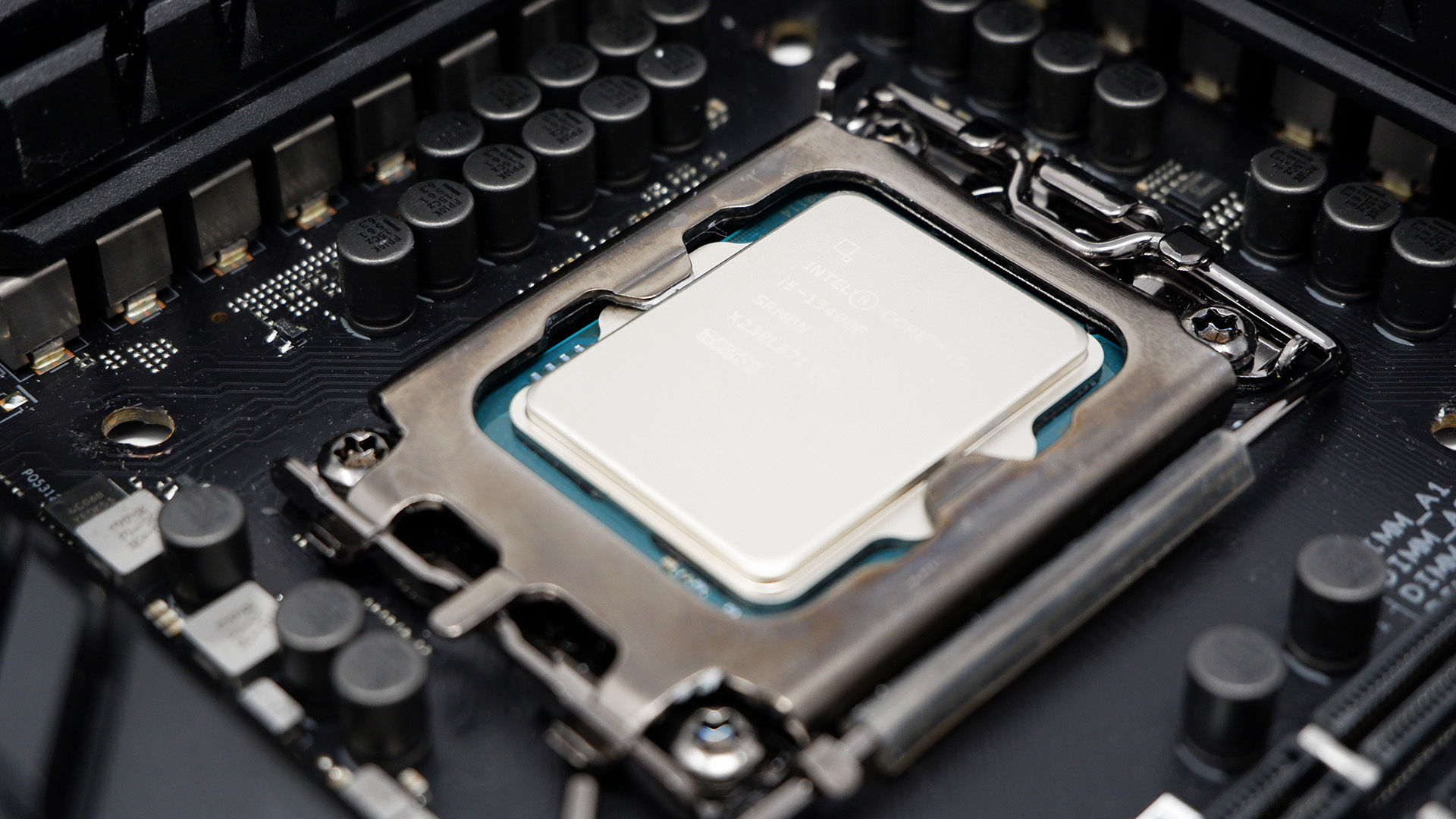[ad_1]

The brand new Intel CPU socket, set to deal with the upcoming Arrow Lake desktop processors, has been unveiled. In a little bit of a bizarre approach. It is going to be the socket for desktop variations of the Meteor Lake chip structure, that are solely going to seem within the boring embedded area.
At this 12 months’s Embedded World convention in Germany, Intel has been letting guests get all handsy with its new embedded Meteor Lake platform. The beforehand laptop-only chips do not require a separate motherboard chipset, in order that they’re good from the space-restricted embedded sector. However one thing else that was showcased on the occasion was the LGA 1851 processor socket—Intel’s alternative for LGA 1700, the socket which has been in service for the reason that twelfth Era of Core CPUs.
We have identified Intel was shifting to a brand new socket design for its post-Raptor Lake desktop processors for fairly a while. However a report on the Embedded World occasion by ComputerBase confirms all the particulars and has photos of the brand new socket if you wish to see all these new pins intimately.
Intel has retained the identical 37.5 mm × 45 mm socket measurement however stuffed an extra 151 pins into the identical space. To stop you from making an attempt to suit an LGA 1700 chip into the socket, although, notches within the plastic encompass are in a unique location.
A few of the additional pins are going to be for PCI Categorical lanes, however I think fairly a couple of of them will not be used till later processors require them. The most recent 14th Gen Core CPUs provide 16 PCIe 5.0 and 4 PCIe 4.0 lanes, and the upper spec ones will be cut up into two teams of eight, permitting for a PCIe 5.0 SSD, just like the Nextorage X sequence, to be immediately linked to the CPU.
Nonetheless, that primarily wastes 4 lanes and there is no approach round this. In some motherboards, placing any SSD into the devoted PCIe 5.0 M.2 slot forces the principle graphics card slot into x8 mode. With LGA 1851, that downside shall be a factor of the previous, as a result of despite the fact that the following technology of desktop CPUs will nonetheless solely have 20 PCIe 5.0 lanes at most, they are often cut up into three teams: x8, x4, and x4.
AMD’s AM5 socket is of the same design, albeit fully sq. (40 x 40 mm) and with over 100 fewer pins, 1718 in complete. Zen 4 processors have as much as 28 PCIe 5.0 lanes, 16 for graphics, eight for SSDs, and 4 to connect with the motherboard chipset (Intel has the same system for its chips, but it surely’s not fairly PCI Categorical).
So that you could be questioning how does AMD handle to have 24 lanes of PCIe 5.0 however Intel solely has 20? What are the additional pins in LGA 1851 for, if it is not only for connectivity? At this stage, it is not fully clear—Intel is switching to DDR5-only for all its forthcoming CPUs, so the reminiscence system has been simplified.
It is attainable a great variety of the extra connections are for energy and grounding, however we’ll simply have to attend and see.
I’ve the sensation that one factor will change into apparent as soon as LGA 1851 motherboards are totally out within the wild: All these pins, squished into fairly a small space, are ripe for being bent or flattened by ham-fisted PC builders, who aren’t cautious when dealing with the board or inserting the CPU.
Whereas a 9% improve in pin density is not particularly large, you will actually have to be a tad extra delicate when constructing a PC with one among Intel’s subsequent CPUs. However no less than with the socket measurement staying the identical, you stand a great likelihood of utilizing most LGA 1700 coolers with an Arrow Lake processor.
[ad_2]
Source link


